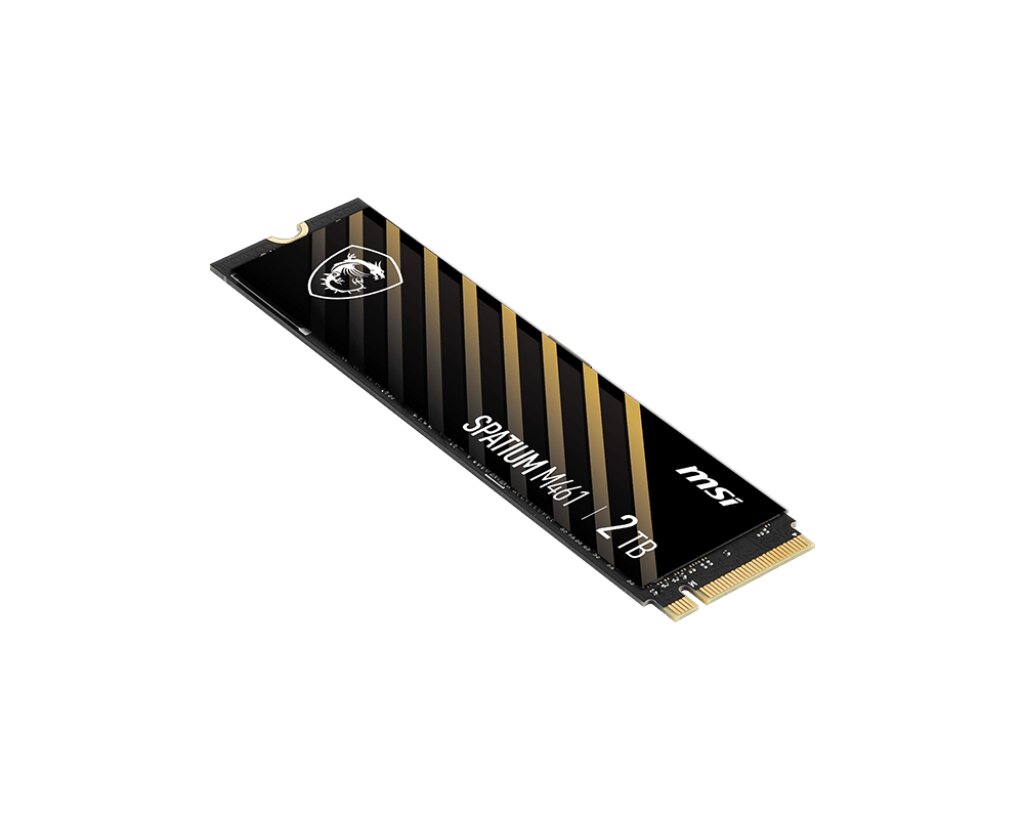As a youngster among the SSD providers, MSI is expanding its portfolio. The Spatium M461 competes in the mid-range with Phison's E21T controller without DRAM. A maximum of 5,000 MB/s can be achieved reading via PCIe 4.0. In the usual M.2 format, the models offer 500 GB, 1 TB, 2 TB or 4 TB of storage space based on QLC-NAND.
With Phison E21T for up to 5,000 MB/s
The controller of the MSI Spatium M461 is the Phison E21T, an economical PCIe 4.0 controller in modern 12 nm production with 4 NAND channels and without its own DRAM. Below the Phison E18, it doesn't use the interface and reaches a maximum of 5,000 MB/s in sequential reading. The M461 is supposed to create this mark in the models with 1 TB, 2 TB and 4 TB. The smallest version with 500 GB is limited to 4,700 MB/s. The differences in sequential writing are even greater: a maximum of 4,200 MB/s with 2 TB and 4 TB storage capacity, 3,200 MB/s with the 1 TB model and only 1,700 MB/s with the 500 GB variant.< /p>
- < figure class="gallery__figure">
 MSI Spatium M461 SSD (image: MSI)
MSI Spatium M461 SSD (image: MSI)
Figure 1 of 3
MSI Spatium M461 SSD (Image: MSI)

Further performance data can be found in the data sheet (PDF). The Corsair MP600 GS (test) uses the same controller, but combines it with faster and more durable TLC memory.
With QLC and without DRAM
However, compromises have to be made in two places. The lack of a dedicated DRAM cache is less problematic, because with modern NVMe SSDs a small part of the system memory (usually 16 MB to 64 MB) can step in as a so-called host memory buffer. This is enough to hide the lack of DRAM in most everyday scenarios. However, demanding users will not want to do without their own DRAM.
However, the potential write weakness of the QLC-NAND used may also be relevant for normal users. If the internal SLC cache runs out during large file transfers, there is a risk of low write rates on an HDD level. The severity of this disadvantage depends on the size of the SLC cache. In the case of the Spatium M461, however, no details are available yet.
Comparatively economical
Depending on the model, the maximum power consumption is 3.7 watts to 5.1 watts according to MSI. Only 50 milliwatts should be required in idle mode (PS3) and only 5 milliwatts in sleep mode (L1.2).
The Total Bytes Written (TBW) are 110 TB , 250TB, 450TB and 900TB fixed. The values are relatively low, which is due to the QLC NAND used. If the TBW is not exceeded prematurely, the usual 5-year guarantee applies.
No precise statements can be made about the price level yet. Although the SSD is already listed by some retailers, the prices should level off at a lower level if it is widely available. The current 80 euros for the 1 TB model still seems too high.
Only since 2021 does the manufacturer MSI, known primarily for graphics cards, mainboards and monitors, also offer it SSDs on.
CB-Funk Podcast Episode #11: Annoying account constraints and falling graphics card prices

